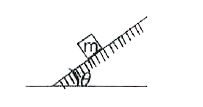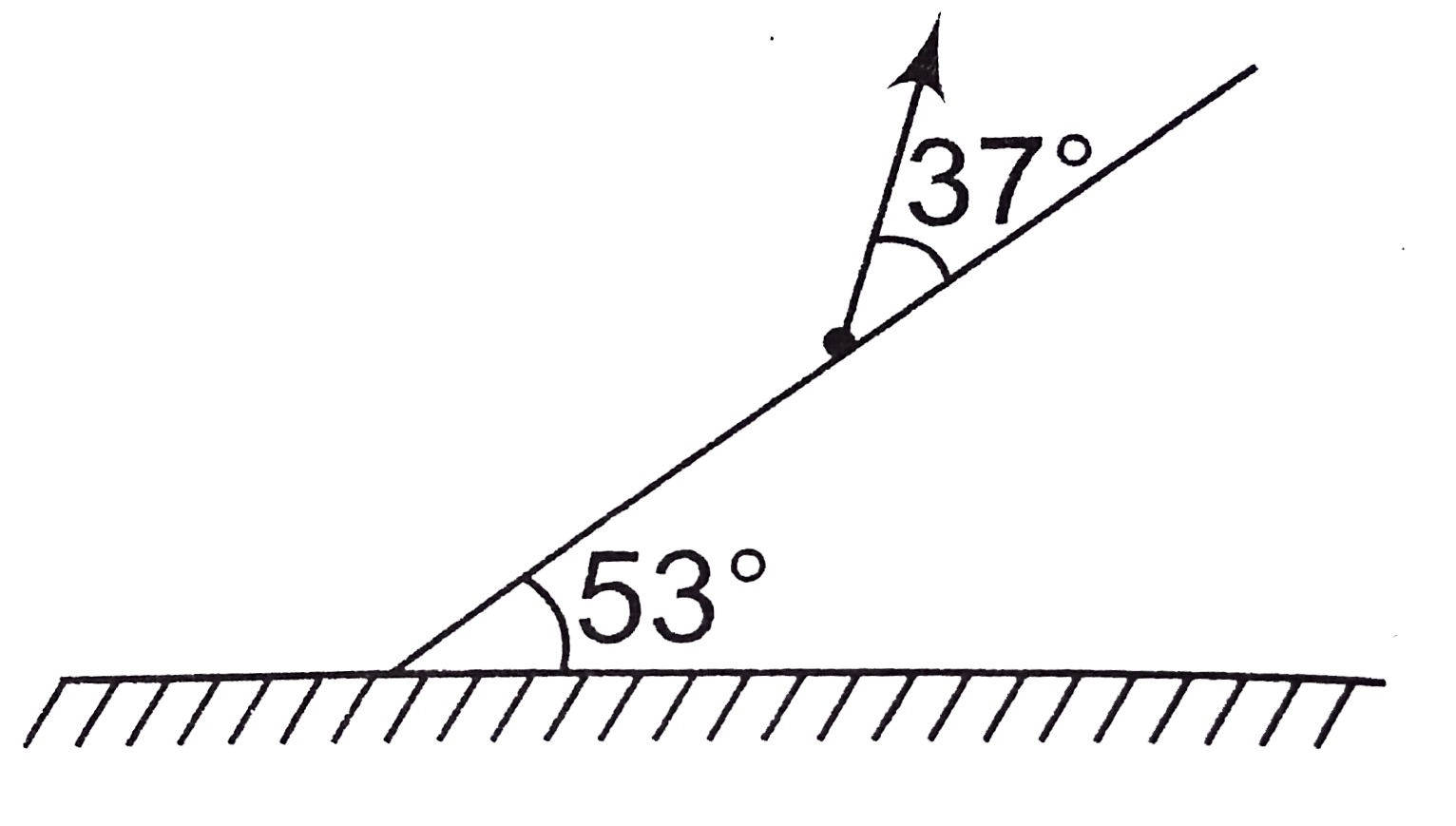A solid cylinder of radius m is kept on an inclined plane on its base and it does not slide. The angle of incline plane is 53∘ with horizontal and it is fixed. What will be maxcimum height (in meters) of the cylinder for it not to topple.
The correct Answer is:3
To solve the problem of finding the maximum height of a solid cylinder on an inclined plane without toppling, we can follow these steps:
1. Understanding the Geometry:
- We have a solid cylinder of radius r placed on an inclined plane that makes an angle of 53∘ with the horizontal.
- The cylinder will not slide, and we need to determine the maximum height h for it not to topple.
2. Identifying the Angle:
- The angle of the inclined plane is 53∘.
- The complementary angle (the angle between the vertical and the inclined plane) is 90∘−53∘=37∘.
3. Setting Up the Right Triangle:
- When the cylinder is about to topple, the center of mass will be vertically above the edge of the base in contact with the inclined plane.
- We can visualize a right triangle where:
- The height from the base of the cylinder to the center of mass is h2.
- The horizontal distance from the edge of the base to the vertical line through the center of mass is r (the radius of the cylinder).
4. Using Trigonometry:
- In the right triangle formed, we can use the tangent of the angle 37∘:
tan(37∘)=oppositeadjacent=h2r
- Rearranging gives:
h=2rtan(37∘)
5. Calculating tan(37∘):
- The value of tan(37∘) is approximately 34 or 0.75.
6. Substituting Values:
- Now substituting r=2m (as given in the problem):
h=2×2×tan(37∘)=2×2×34
- Simplifying this:
h=4×34=3m
7. Final Answer:
- Therefore, the maximum height h of the cylinder for it not to topple is 3m.
Summary:
The maximum height of the cylinder for it not to topple is 3m.
- We have a solid cylinder of radius r placed on an inclined plane that makes an angle of 53∘ with the horizontal.
- The cylinder will not slide, and we need to determine the maximum height h for it not to topple.
- The angle of the inclined plane is 53∘.
- The complementary angle (the angle between the vertical and the inclined plane) is 90∘−53∘=37∘.
- When the cylinder is about to topple, the center of mass will be vertically above the edge of the base in contact with the inclined plane.
- We can visualize a right triangle where:
- The height from the base of the cylinder to the center of mass is h2.
- The horizontal distance from the edge of the base to the vertical line through the center of mass is r (the radius of the cylinder).
- In the right triangle formed, we can use the tangent of the angle 37∘:
tan(37∘)=oppositeadjacent=h2r
- Rearranging gives:
h=2rtan(37∘)
- The value of tan(37∘) is approximately 34 or 0.75.
- Now substituting r=2m (as given in the problem):
h=2×2×tan(37∘)=2×2×34
- Simplifying this:
h=4×34=3m
- Therefore, the maximum height h of the cylinder for it not to topple is 3m.
The maximum height of the cylinder for it not to topple is 3m.
Topper's Solved these Questions
- TEST PAPERSBook:RESONANCE ENGLISHChapter:TEST PAPERSExercise:PHYSICS
Explore 784 Videos
- TEST PAPERSBook:RESONANCE ENGLISHChapter:TEST PAPERSExercise:PART - II PHYSICS SEC - 2
Explore 20 Videos
- SIMPLE HARMONIC MOTION Book:RESONANCE ENGLISHChapter:SIMPLE HARMONIC MOTION Exercise:Advanced Level Problems
Explore 13 Videos
- TEST SERIESBook:RESONANCE ENGLISHChapter:TEST SERIESExercise:PHYSICS
Explore 130 Videos
Similar Questions
Knowledge Check
A solid cylinder of mass M and radius R rolls without slipping down an inclined plane making an angle 6 with the horizontal. Then its acceleration is.
A1/3 g sinθB2/3 g sinθC2/5 g sinθD2/7 g sinθ
A cylinder of mass M and radius R rolls on an inclined plane. The gain in kinetic energy is
View SolutionA block of mass m is kept on an inclined plane is angle inclination θ(<ϕ), where ϕ= angle of friction. Then :

View SolutionA solid cylinder of mass M and radius R rolls down an inclined plane of height h without slipping. The speed of its centre when it reaches the bottom is.
View SolutionA bullet is fired from the bottom of the inclined plane at angle θ=37∘ with the inclined plane. The angle of incline is 30∘ with the horizontal. Find the
(a) position of the maximum height of the bullet from the inclined plane ,
(b) time of light ,
( c) range along the incline ,
(d) the value of θ at which the range will be maximum ,
( e) maximum range.
View SolutionA solid cylinder of mass M and radius R rolls down an inclined plane of height h. The angular velocity of the cylinder when it reaches the bottom of the plane will be :
View SolutionA particle is projected from the inclined plane at angle 37∘ with the inclined plane in upward direction with speed 10m/s. The angle of inclined plane with horizontal is 53∘. Then the maximum height attained by the particle from the inclined plane will be-

View SolutionA solid cylinder (i) rolls down (ii) slides down an inclined plane. The ratio of the accelerations in these conditions is
View Solution